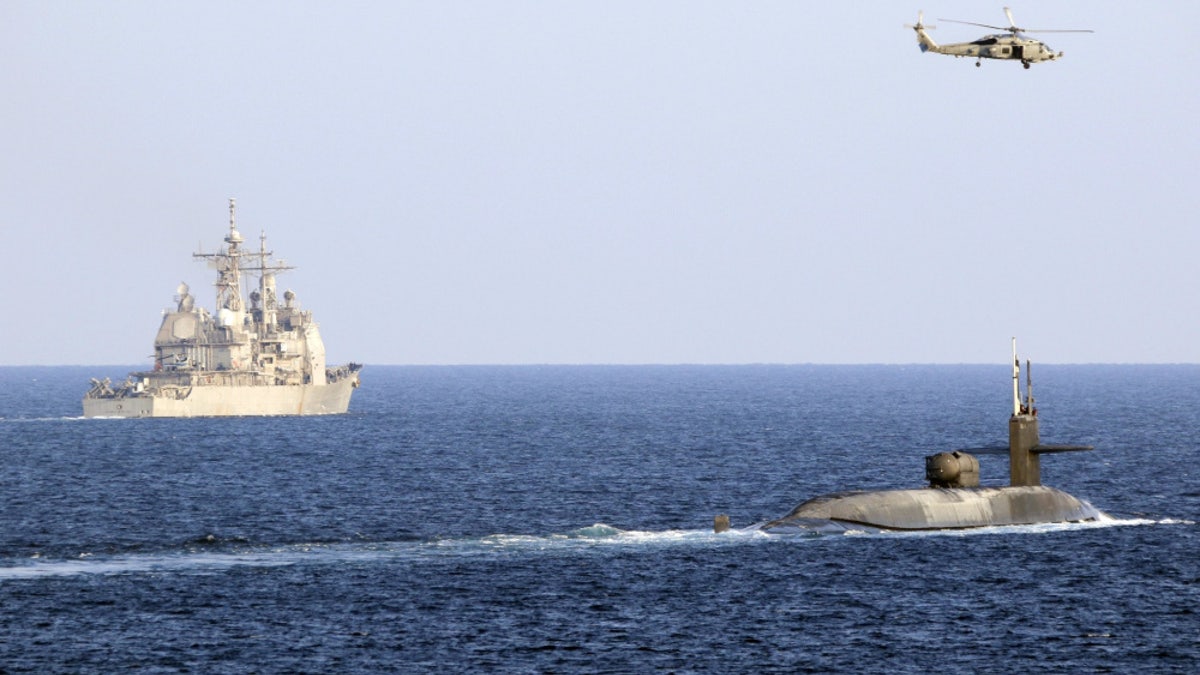Fox News Flash top headlines for January 3
Fox News Flash top headlines are here. Check out what's clicking on Foxnews.com.
The Navy is getting into drones in a big way, with new plans to add 21 unmanned surface and underwater vessels over the next five years.
The Navy just released its 30-year shipbuilding plan, which reflects a growing emphasis on the use of drones in maritime combat.
Between now and 2026, the Navy aims to acquire 12 large unmanned surface vessels, one medium unmanned surface vessel and 8 extra-large unmanned underwater vessels, according to the plan.
"Significant resources are added to accelerate fielding the full spectrum of unmanned capabilities, including man-machine teaming ahead of full autonomy. These systems are now included in wargames, exercises and limited real-world operations," the plan states.
NAVY TESTS NEW SLEEK, STEALTHY DESTROYER HULL IN ROUGH SEAS
The service is already moving quickly to design and build a new large unmanned surface vehicle which, among other things, could assist in surveillance, submarine-hunting or even a surface warfare attack, while also providing missile defense capacity.
Earlier this year, fixed-price design study deals were awarded to Huntington Ingalls, Lockheed Martin, Bollinger Shipyards, Marinette Marine, Gibbs & Cox Maritime Solutions and Austal USA. While particular progress and development schedules, as well as further contract awards, are likely still in flux to some extent, the move to put these major players on contract reveals the accelerated pace with which the Navy plans to operate.

The guided-missile submarine USS Georgia, right, transits the Strait of Hormuz with the guided-missile cruiser USS Port Royal, the guided-missile cruiser USS Philippine Sea, not pictured, and a MH-60R Sea Hawk helicopter, attached to Helicopter Maritime Strike Squadron 48. (U.S. Navy photo by Mass Communication Specialist 2nd Class Indra Beaufort)
The service is also moving forward with its plans for the ORCA, a large, unmanned submarine-like vessel intended to bring new dimensions to maritime warfare. The initiative has made substantial progress, according to the Navy.
Earlier this year, Boeing and Lockheed were awarded developmental deals to build four ORCAs, which will likely conduct undersea surveillance missions and perhaps even fire torpedoes when directed by a human operator.
Boeing’s ORCA, developed under a previous Navy contract, is based on its Echo Ranger undersea drone. It is an 84-foot, 50-ton drone able to operate at depths up to 11,000 feet.
NAVY 'MOVES-OUT' ON OPERATING 11 AIRCRAFT CARRIERS
The drone features built-in obstacle avoidance, autonomous buoyancy and advanced sonar. "The vehicle’s advanced autonomy allows it to operate for months at a time without physical human contact and in congested waters," according to Boeing’s data sheet on its Echo Voyager.
While there are many advantages drones will bring to maritime warfare, key plusses involve range and mission endurance. An unmanned ship or undersea platform can literally operate for months at a time without needing human intervention, particularly if it is functioning in a surveillance role.
A large unmanned submarine, for example, could continuously search for enemy submarines and surface ships for weeks at a time, while sending data back through various networking channels without needing to return to port. Boeing’s ORCA variant has a range of up to 6,500 nautical miles, according to the company.
CLICK HERE TO GET THE FOX NEWS APP
The epanding use of ocean drones was predicted in a 2015 essay in the International Journal of Advanced Research in Artificial Intelligence.
The essay -- "Military Robotics: Latest Trends and Spatial Grasp Solutions from the National Academy of Sciences" (Peter Simon Sapaty) -- predicted that large underwater drones will be used to "conduct missions longer than 70 days in open ocean and littoral seas, being fully autonomous, long-endurance, land-launched, with advanced sensing for littoral environments."
-- Kris Osborn is the Managing Editor of Warrior Maven and The Defense Editor of The National Interest --





















